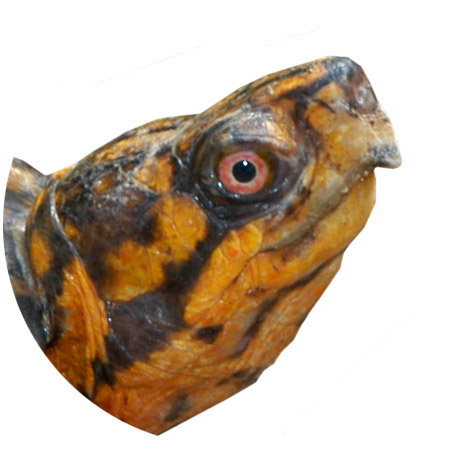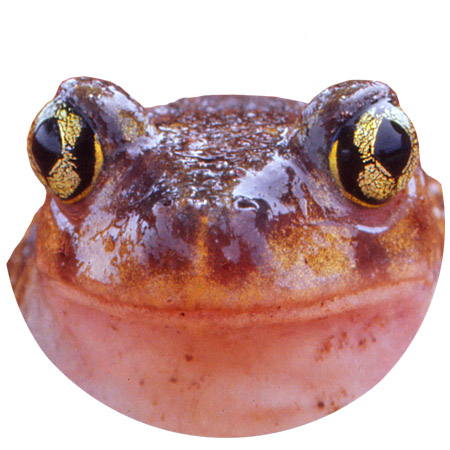Eastern Glossy Swampsnake
Liodytes rigida rigida
** Harmless **
Common Name: |
Eastern Glossy Swampsnake |
Scientific Name: |
Liodytes rigida rigida |
Etymology: |
|
Genus: |
Liodytes means "smooth diver". |
Species: |
rigida is derived from the Latin word rigidus which means "stiff", this refers to the way the the snake moves. |
Subspecies: |
rigida is derived from the Latin word rigidus which means "stiff", this refers to the way the the snake moves. |
Vernacular Names: |
Brown banded leather snake, brown water snake, green queen snake, rigid queen snake, striped moccasin. |
Average Length: |
14 - 24 in. (36 - 61 cm) |
Virginia Record Length: |
30.5 in. (77.5 cm) |
Record length: |
31.4 in. (79.7 cm) |
Systematics: Described originally as Coluber rigidus by Thomas Say in 1825 from "the southern states." Schmidt (1953) restricted the type locality to Charleston, South Carolina. The genus Regina was first used for this species by Baird and Girard (1853). Cope (1892) placed the Eastern Glossy Swampsnake in the genus Natrix, where it remained until Smith and Huheey (1960a) clarified the taxonomic history of the crayfish snake group and resurrected Regina. Natrix rigida (e.g., Richmond, 1940; Burger, 1958; Huheey, 1959; Conant, 1958, 1975; Tobey, 1985) and Regina rigida (e.g., Hardy, 1972; Musick, 1972) were variously used for this species in the Virginia literature. Rossman and Eberle (1977) determined that Nerodia was the most appropriate name for North American water snakes and that Regina should be retained for the crayfish snakes. Subsequent Virginia authors have followed this arrangement (e.g., Delzell, 1979; Mitchell and Pague, 1987; Mitchell, 1991a). In 2008 the Regina rigida rigida was reclassified as Liodytes rigida rigida.
Description: A small- to medium-sized, shiny snake reaching a maximum total length of 797 mm (31.4 inches) (Conant and Collins, 1991). In Virginia, maximum known snout-vent length (SVL) is 635 mm (25.0 inches) and maximum total length 775 mm (30.5 inches). In this study, tail length/total length averaged 20.5 ± 1.4 (18.1-22.3, n = 7).
Scutellation: Ventrals 120-136 (ave. 132.6 ± 5.2, n = 8); subcaudals 51-63 (ave. 58.4 ± 3.6, n = 7); ventrals + subcaudals 178-195 (ave. = 190.6 ± 6.1, n = 7); dorsal scales keeled, scale rows 19 at midbody; anal plate divided; infralabials 10/10 (87.5%, n = 8) or 10/9 (12.5%); supralabials 7/7 (87.5%) or 7/6 (12.5%); loreal scale absent; preoculars 1/1; postoculars 2/2; temporal scales 1 + 1, 1+2, or 1+3.
Coloration and Pattern: Dorsum of head, body, and tail uniformly chocolate brown with 2 thin, black, almost indistinguishable stripes on either side of midline; venter cream with 2 rows of black spots or half moons on either side of midline; stripes absent or diffuse on tail; cream pigmentation on venter encroaches on 1st dorsal scale row and fades into brown; the lighter centers on 1st scale row give appearance of forming a lateral stripe-some individuals are darker than others in this region but distinct striping is not present; labial scales white; oblique black lines on lateral portion of neck (may be indistinct in some individuals); some chin scales outlined in black. This is a small- to medium-sized, dark, shiny water snake with large eyes and a somewhat blunt snout.
Sexual Dimorphism: The largest male in the small sample from Virginia was 440 mm SVL and 560 mm total length, and the largest female was 635 mm SVL and 775 mm total length. Huheey (1959) reported that, throughout the range, males were smaller (to 664 mm total length) than females (to 780 mm total length). Tail length/total length in males from Virginia was higher (20.9-22.3%, ave. = 21.3 ± 0.6, n = 5) than the ratio in females (18.1-19.1%, ave. = 18.6, n = 2). Males had fewer ventral scales (130.8 ± 6.1, 120-134, n = 5) than females (135.7 ± 0.6, 135-136, n = 3), but more subcaudal scales (males 58-62, ave. = 60.2 ± 1.8, n = 5; females 52-56, ave. = 54.0, n = 2). The number of ventrals + subcaudals was similar in both sexes (males 178-195, ave. = 191.0 ± 7.3, n = 5; females 188-191, ave. = 189.5, n = 2).
Juveniles: Juveniles are colored and patterned as adults but the venter is pinkish. Neonates were 155-188 mm total length at birth (Ernst and Barbour, 1989b). Full-term embryos from North Carolina measured 130-148 mm SVL and 165-188 mm total length, and weighed an average of 2.8 g (Brown, 1978).
Confusing Species: This species may be confused with Queen Snakes (Regina septemvittata), which have a distinct lateral light stripe and 2 narrow, dark stripes (no black half moons) on the venter. Northern Watersnakes (Nerodia sipedon) have anterior dark crossbands, a posterior series of dark, alternating dorsal and lateral blotches, and series of half moons on the ventral scales. Plain-Bellied Watersnakes (Nerodia erythrogaster) are uniformly brown dorsally and pinkish to reddish ventrally, and lack spots on the venter. Gartersnakes and Ribbonsnakes (Thamnophis) possess a light-colored middorsal stripe.
Geographic Variation: The limited number of specimens and populations precludes geographic comparisons in Virginia. The average numbers of ventral scales from the northern (137.7) and southern (136.7) portions of the Coastal Plain of North Carolina (Huheey and Palmer, 1962) were slightly higher than the average number from the Virginia population. There is a clinal decrease in ventral and subcaudal scale counts into Florida (Huheey, 1959). The subspecies differ in throat pattern and number of preocular scales (Huheey, 1959; Conant and Collins, 1991).
Biology: Little is known about the biology of L. rigida in Virginia. Notes provided by N. D. Richmond (pers. comm.) indicate that several specimens were collected in tidal marshes. One was first seen on a grass mat in full sun about 100 m from shore. Two were "burrowing in peaty muck beneath imbedded sticks in edge of river marsh." One individual was found on a muskrat (Ondatra zibethicus) mound in a freshwater tidal marsh bordered by bottomland hardwood forest containing bald cypress (Taxodium distichum) (K. A. Buhlmann, pers. comm.). This species is highly aquatic. Habitats in other parts of its range include cypress ponds, sphagnum-choked canals, and streams, as well as the edges of ponds (Mount, 1975; Martof et al., 1980). Liodytes rigida is seldom seen, and only a few have been collected in other states at night during rains (Mount, 1975; Martof et al., 1980). Two adults in the Virginia sample were dead when found in February; the others were collected in March, April, and October.
These snakes are almost entirely predators of crayfish. Other prey known to be consumed are dragonfly naiads, other aquatic insect larvae, Coastal Plains Leopard Frog (Lithobates sphenocephalus utricularius), cricket frogs (Acris spp.), Eastern Narrow-mouthed Toads (Gastrophryne carolinensis), sirens (Siren spp.), and fish (Ernst and Barbour, 1989b). The only known predators of L. rigida are Eastern Kingsnakes (Lampropeltis getula) and Bullfrogs (Lithobates catesbeiana) (Ernst and Barbour, 1989b).
Liodytes rigida bears living young. Nothing is known of the reproductive biology of this snake in Virginia. Elsewhere in its range, litter size is 6-18 and birth occurs from late July through September (Huheey, 1959; Dundee and Rossman, 1989; Ernst and Barbour, 1989b). Brown (1978) found a freshly killed female in North Carolina with nine full-term embryos on 29 August.
Remarks: So little is known of the biology of this species in Virginia that any information obtained should be reported. Until 1991, only seven specimens had been found in Virginia, all by N. D. Richmond in 1939 and 1940. K. A. Buhlmann and A. H. Savitzky independently found juveniles at the historical site in 1991, confirming the continued presence of this species in New Kent County. One was released and one was retained as a voucher.
Conservation and Management: Tobey (1979), Mitchell and Pague (1987), and Mitchell (1991a) listed this species in the status undetermined category because of the dearth of information available for it. Until 1991, no verifiable observations had been made in 50 years. Information is needed on locations of other populations in Virginia, if they exist. If no other population can be found in a reasonable time, then the one in New Kent County should be protected and the species listed as endangered or threatened under Virginia's endangered species law.
References for Life History
Photos:
*Click on a thumbnail for a larger version.
Verified County/City Occurrence in Virginia
New Kent
CITIES
Virginia Beach
Verified in 1 counties and 1 cities.
U.S. Range

US range map based on work done by The Center for North American Herpetology (cnah.org) and Travis W. Taggart.







